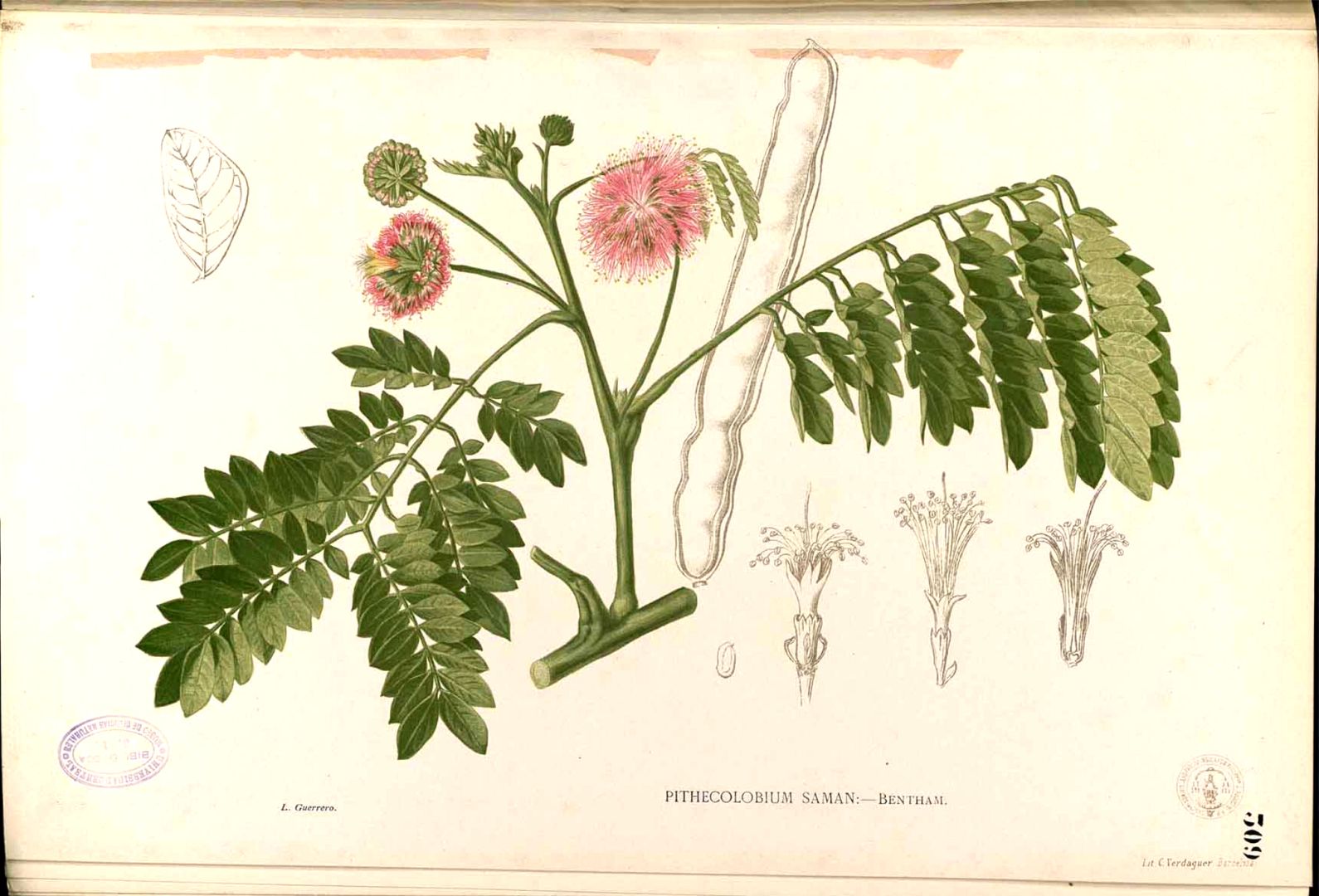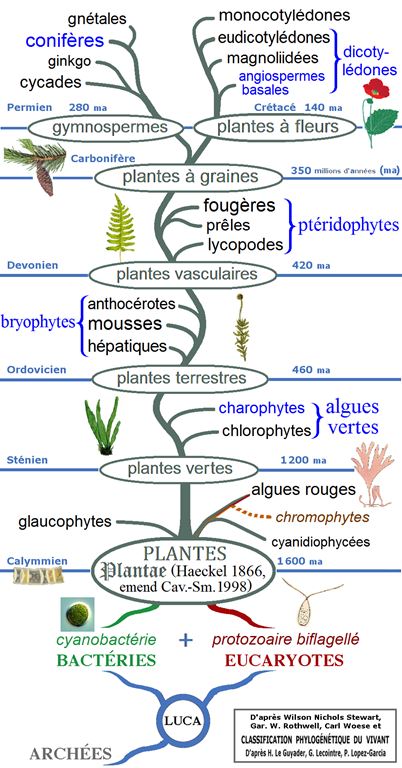Arbre à pluie 

Note alimentaire ![]()
![]()
![]()
Note médicinale ![]()
![]()
Pas de description pour le moment 😕
Classification
- Classique : en haut de l\'écran, sous le coeur.
- Phylogénétique :
- Clade 4 : Angiospermes ;
- Clade 3 : Dicotylédones_vraies ;
- Clade 2 : Rosidées ;
- Clade 1 : Fabidées ;
- Ordre APN : Fabales ;
- Famille APN : Fabaceae ;
Illustration : cet arbre phylogénétique des plantes montre les principaux clades et groupes traditionnels (monophylétiques en noir et paraphylétiques en bleu).
Dénominations
✖- Nom botanique : Samanea saman (Jacq.) Merr. (1916)
- Synonymes français : bois noir d'Haïti, arbre de pluie
- Synonymes : Albizia saman (Jacq.) Merr. 1876 (synonyme, selon GRIN ; nom retenu, selon TPL) ;
- Noms anglais et locaux : cow-tamarind, French-tamarind, monkeypod (monkey pod), rain tree (raintree), samán (es), regnträd (sv)
Description et culture
✖ Consommation (rapports de comestibilité, parties utilisables et usages alimentaires correspondants)
Consommation (rapports de comestibilité, parties utilisables et usages alimentaires correspondants)
✖
Partie(s) comestible(s){{{0(+x) : pulpe de la gousse, feuilles, fruit{{{0(+x)µ.
Utilisation(s)/usage(s)µ{{{0(+x) culinaires :
-la couche pulpeuse des gousses mûres est consommée crue ; une boisson est également fabriquée à partir de la pulpe ;
-les jeunes feuilles ont été mangées en salade quand la nourriture est rare/manquante{{{0(+x).
Données absentes/manquantes et/ou insuffisantes{{{(rp*)
Partie testée :
/| Taux d'humidité | Énergie (kj) | Énergie (kcal) | Protéines (g) |
|---|---|---|---|
| / | / | / | / |
| Pro- vitamines A (µg) |
Vitamines C (mg) | Fer (mg) | Zinc (mg) |
| / | / | / | / |
 Risques et précautions à prendre
Risques et précautions à prendre
✖
néant, inconnus ou indéterminés.
Galerie(s)
✖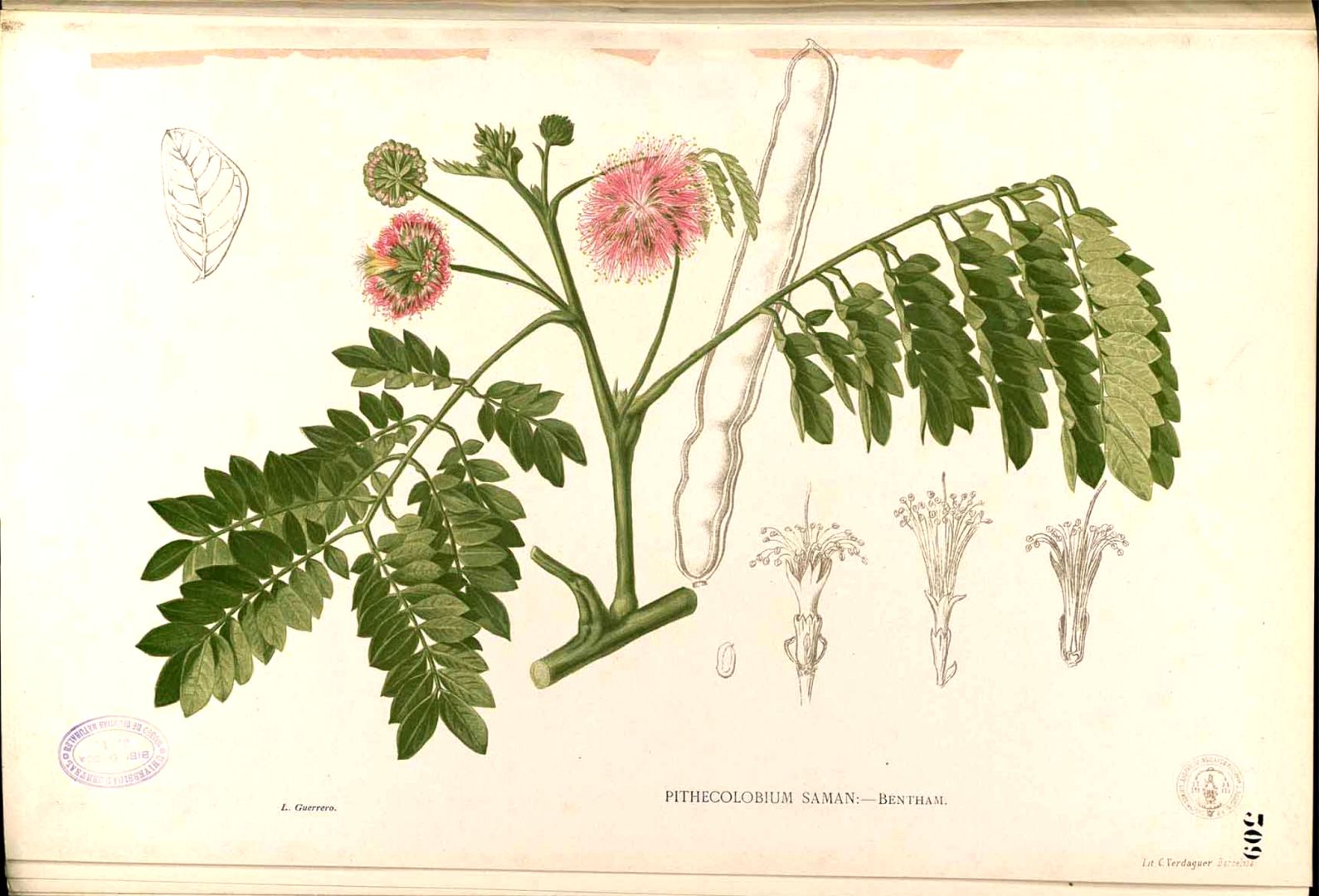
Par Blanco, M., Flora de Filipinas, ed. 3 (1877-1883) Fl. Filip., ed. 3 t. 309, via plantillustrations
![Illustration Samanea saman, Par Britton, N.L., Horne, F.W., Popular flora of Puerto Rico, Flora Borinqueña [unpublished watercolors] Popular Fl. Puerto Rico t. 451] , via plantillustrations](inc/images/illustrations/samanea_saman2.jpg )
Par Britton, N.L., Horne, F.W., Popular flora of Puerto Rico, Flora Borinqueña [unpublished watercolors] Popular Fl. Puerto Rico t. 451] , via plantillustrations
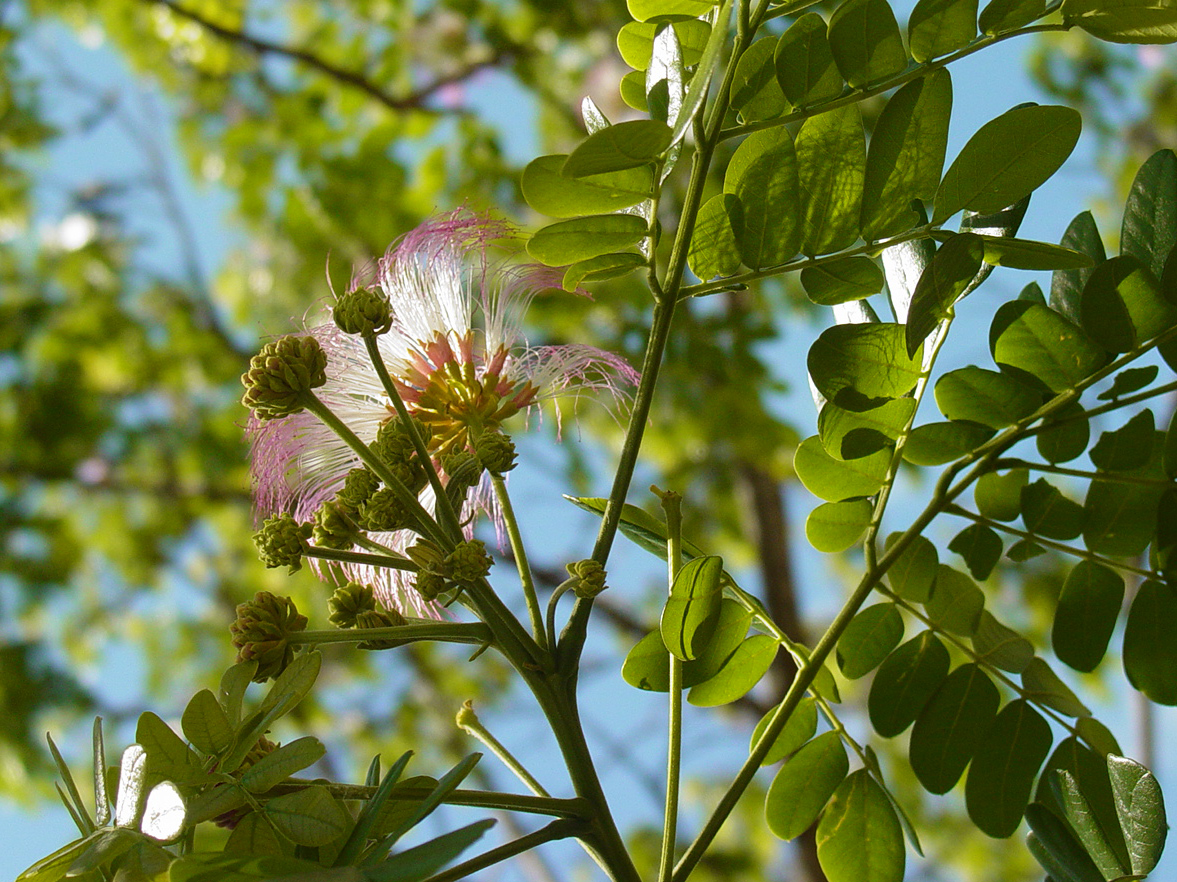
Par inconnu, via plantillustrations
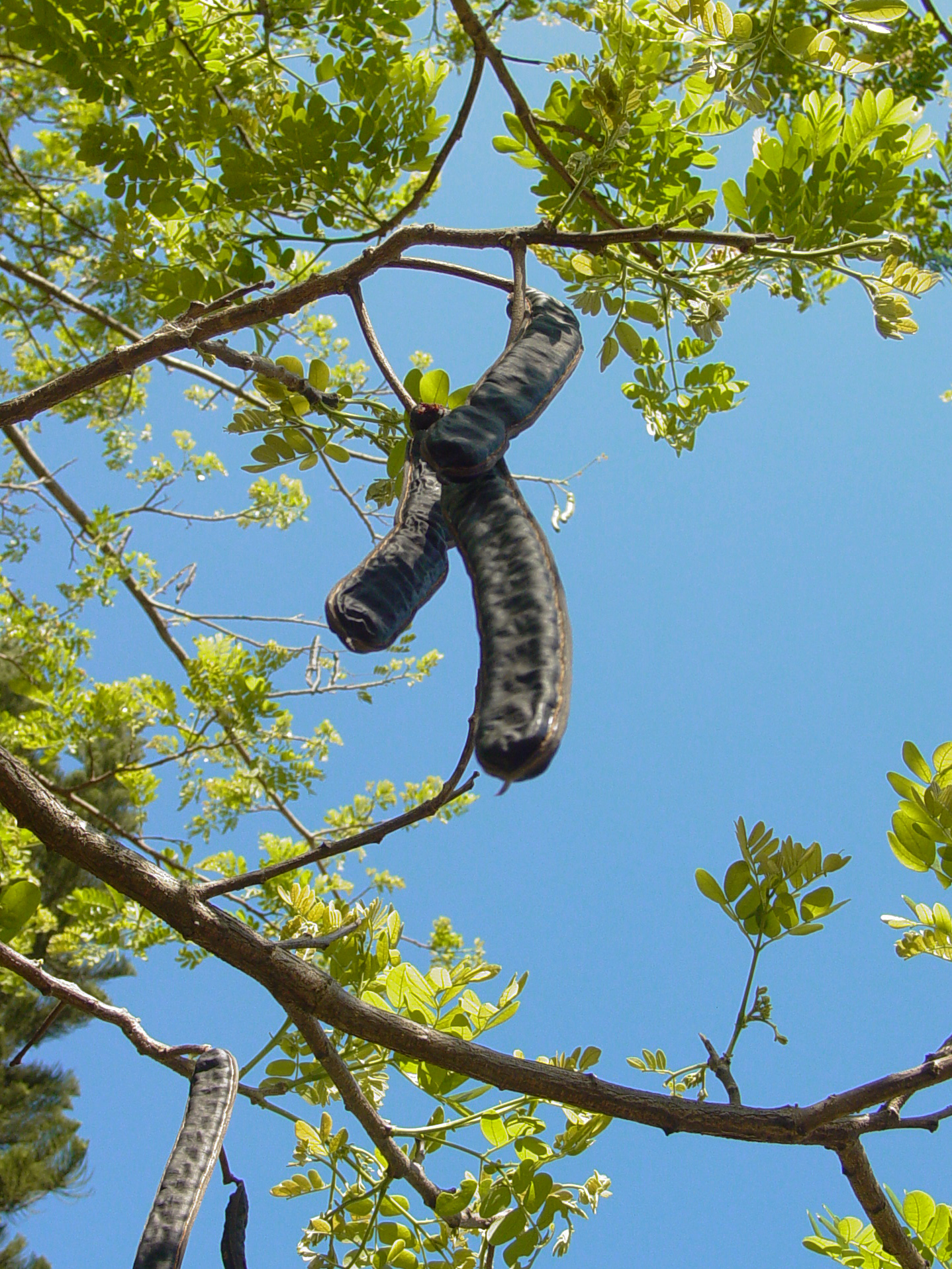
Par inconnu, via plantillustrations
Liens, sources et/ou références
✖Sources et/ou références :
agroforestry.net (en anglais) ; "Handbook of Energy Crops" (en anglais, par James A. Duke), via Purdue Agriculture (New CROP) ; Wikipedia ; Wikipedia (en anglais) ; Wikipedia (en anglais) ; 5"Plants For A Future" (en anglais) ;
dont classification : "The Plant List" (en anglais) ; "GRIN" (en anglais) ;
dont livres et bases de données : 0"Food Plants International" (en anglais) ;
dont biographie/références de "FOOD PLANTS INTERNATIONAL" :
Abbiw, D.K., 1990, Useful Plants of Ghana. West African uses of wild and cultivated plants. Intermediate Technology Publications and the Royal Botanic Gardens, Kew. p 46 (As Samanea saman) ; Ambasta, S.P. (Ed.), 2000, The Useful Plants of India. CSIR India. p 544 (As Samanea saman) ; Barwick, M., 2004, Tropical and Subtropical Trees. A Worldwide Encyclopedic Guide. Thames and Hudson p 359 (As Samanea saman) ; Bodkin, F., 1991, Encyclopedia Botanica. Cornstalk publishing, p 905 (As Samanea saman) ; Bole, P.V., & Yaghani, Y., 1985, Field Guide to the Common Trees of India. OUP p 93 (As Enterolobium saman). ; Borrell, O.W., 1989, An Annotated Checklist of the Flora of Kairiru Island, New Guinea. Marcellin College, Victoria Australia. p 95 (As Samanea saman) ; Burkill, H. M., 1985, The useful plants of west tropical Africa, Vol. 3. Kew. (As Albizia saman) ; Burkill, I.H., 1966, A Dictionary of the Economic Products of the Malay Peninsula. Ministry of Agriculture and Cooperatives, Kuala Lumpur, Malaysia. Vol 1 (A-H) p 942 (As Enterolobium saman) ; Condit, R., et al, 2011, Trees of Panama and Costa Rica. Princeton Field Guides. p 212 (As Samanea saman) ; Cooper, W. and Cooper, W., 2004, Fruits of the Australian Tropical Rainforest. Nokomis Editions, Victoria, Australia. p 315 (As Samanea saman) ; Cundall, P., (ed.), 2004, Gardening Australia: flora: the gardener's bible. ABC Books. p 122 (As Albizia saman) ; Ekman Herbarium records Haiti (As Enterolobium saman) ; Elevitch, C.R.(ed.), 2006, Traditional Trees of the Pacific Islands: Their Culture, Environment and Use. Permanent Agriculture Resources, Holualoa, Hawaii. p 661 (As Samanea saman) ; Engel, D.H., & Phummai, S., 2000, A Field Guide to Tropical Plants of Asia. Timber Press. p 43, 90 (As Samanea saman) ; Etherington, K., & Imwold, D., (Eds), 2001, Botanica's Trees & Shrubs. The illustrated A-Z of over 8500 trees and shrubs. Random House, Australia. p 84 (As Albizia saman) ; Flora of Australia Volume 12, Mimosaceae (excl. Acacia) Caesalpiniaceae. Melbourne: CSIRO Australia (1998) p 32 (As Samanea saman) ; French, B.R., 1986, Food Plants of Papua New Guinea, A Compendium. Asia Pacific Science Foundation p 383 (As Samanea saman) ; Grandtner, M. M., 2008, World Dictionary of Trees. Wood and Forest Science Department. Laval University, Quebec, Qc Canada. (Internet database https://www.wdt.qc.ca) (As Samanea saman) ; Hearne, D.A., & Rance, S.J., 1975, Trees for Darwin and Northern Australia. AGPS, Canberra p 103, Pl 31 (As Samanea saman) ; Hedrick, U.P., 1919, (Ed.), Sturtevant's edible plants of the world. p 506 (As Pithocellobium saman) ; J. Wash. Acad. Sci. 6:47. 1916 (As Samanea saman) ; Katende, A.B., Birnie, A & Tengnas B., 1995, Useful Trees and Shrubs for Uganda. Identification, Propagation and Management for Agricultural and Pastoral Communities. Technical handbook No 10. Regional Soil Conservation Unit, Nairobi, Kenya. p 84 (As Albizia saman) ; Kiple, K.F. & Ornelas, K.C., (eds), 2000, The Cambridge World History of Food. CUP p 1842 (As Samanea saman) ; Lugod, G.C. and de Padua L.S., 1979, Wild Food Plants in the Philippines. Vol. 1. Univ. of Philippines Los Banos. p 43 (As Samanea saman) ; Martin, F. W., et al, 1987, Perennial Edible Fruits of the Tropics. USDA Handbook 642 p 99 ; Massal, E. and Barrau, J., 1973, Food Plants of the South Sea Islands. SPC Technical Paper No 94. Noumea, New Caledonia. p 42 (As Samanea saman) ; Mbuya, L.P., Msanga, H.P., Ruffo, C.K., Birnie, A & Tengnas, B., 1994, Useful Trees and Shrubs for Tanzania. Regional Soil Conservation Unit. Technical Handbook No 6. p 92 (As Albizia saman) ; Monsalud, M.R., Tongacan, A.L., Lopez, F.R., & Lagrimas, M.Q., 1966, Edible Wild Plants in Philippine Forests. Philippine Journal of Science. p 490 (As Samanea saman) ; Omawale, 1973, Guyana's edible plants. Guyana University, Georgetown p 16 (As Samanea saman) ; Peekel, P.G., 1984, (Translation E.E.Henty), Flora of the Bismarck Archipelago for Naturalists, Division of Botany, Lae, PNG. p 205, 204 (As Samanea saman) ; Pham-Hoang Ho, 1999, An Illustrated Flora of Vietnam. Nha Xuat Ban Tre. p 827 (As Samanea saman) ; Phon, P., 2000, Plants used in Cambodia. © Pauline Dy Phon, Phnom Penh, Cambodia. p 21 (As Albizia saman) ; Royal Botanic Gardens, Kew (1999). Survey of Economic Plants for Arid and Semi-Arid Lands (SEPASAL) database. Published on the Internet; https://www.rbgkew.org.uk/ceb/sepasal/internet [Accessed 28th April 2011] (As Albizia saman) ; Sawian, J. T., et al, 2007, Wild edible plants of Meghalaya, North-east India. Natural Product Radiance Vol. 6(5): p 421 (As Samanea saman) ; Smith, N., Mori, S.A., et al, 2004, Flowering Plants of the Neotropics. Princeton. Plate 18 (Photo) (As Pithecellobium saman) ; Staples, G.W. and Herbst, D.R., 2005, A tropical Garden Flora. Bishop Museum Press, Honolulu, Hawaii. p 324 (Drawing) (As Samanea saman) ; Swaminathan, M.S., and Kochnar, S.L., 2007, An Atlas of Major Flowering Trees in India. Macmillan. p 134 (As Samanea saman) ; Verdcourt, B., 1979, Manual of New Guinea Legumes. Botany Bulletin No 11, Division of Botany, Lae, Papua New Guinea. p 207 (As Samanea saman) ; Zuchowski W., 2007, Tropical Plants of Costa Rica. A Zona Tropical Publication, Comstock Publishing. p 271 (As Samanea saman)
Recherche de/pour :
- "Samanea saman" sur Google (pages et
images) ;
TROPICOS (en anglais) ;
Tela Botanica ;
Pl@ntNet ;
Pl@ntUse ;
- "Arbre à pluie" sur Google (pages, images et recettes) ;
- "Samanea saman" sur Google (pages et
images) ;
TROPICOS (en anglais) ;
Tela Botanica ;
Pl@ntNet ;
Pl@ntUse ;
Espèces du même genre (Samanea)
✖2 taxons
Espèces de la même famille (Fabaceae)
✖50 taxons (sur 2017)
- Abrus cantoniensis
- Abrus fruticulosus
- Abrus precatorius L.
- Abrus pulchellus Wall. ex Thwaites
- Acacia abyssinica Hochst. ex Benth.
- Acacia acatlensis Benth.
- Acacia acradenia F.Muell.
- Acacia acuminata Benth.
- Acacia adoxa Pedley
- Acacia adsurgens Maiden & Blakeley
- Acacia aff. Cuthbertsonii Maiden et Blakely
- Acacia albida
- Acacia ammobia Maconochie
- Acacia ampliceps Maslin
- Acacia amythethophylla Steud. ex A. Rich.
- Acacia anaticeps Tindale
- Acacia ancistrocarpa Maiden & Blakely
- Acacia aneura F.Muell. ex Benth. (Mulga)
- Acacia angustissima (Mill.) Kuntze
- Acacia ankokib (Mill.) Kuntze
- Acacia aromo Hook. & Arn.
- Acacia asak (Forssk.) Willd.
- Acacia ataxacantha DC.
- Acacia aulococarpa
- Acacia auriculiformis A. Cunn. ex Benth.
- Acacia baileyana
- Acacia beauverdiana Ewart & Sharman
- Acacia bidwillii Benth.
- Acacia bilimekii
- Acacia bilimekii
- Acacia bivenosa DC.
- Acacia blakelyi
- Acacia blakelyi
- Acacia brachystachya Benth.
- Acacia burkei Benth.
- Acacia bussei Harms ex B. Y. Sjostedt
- Acacia caffra (Thunb.) Willd.
- Acacia calamifolia (Thunb.) Willd.
- Acacia calcicola Forde & Ising
- Acacia cambagei R.T. Baker
- Acacia catechu (L. f.) Willd.
- Acacia caven
- Acacia choriophylla Benth.
- Acacia chundra (Rottler) Willd.
- Acacia citrinoviridis Tindale & Maslin
- Acacia cochliacantha Humb. & Bonpl. ex Willd.
- Acacia colei Maslin & M.A.J. Thomson
- Acacia complanata A. Cunn. ex Benth.
- Acacia concinna (Willd.) DC
- Acacia concurrens Pedley
- ...
![Illustration Samanea saman, Par Britton, N.L., Horne, F.W., Popular flora of Puerto Rico, Flora Borinqueña [unpublished watercolors] Popular Fl. Puerto Rico t. 451] , via plantillustrations](inc/images/illustrations/samanea_saman2.jpg)

